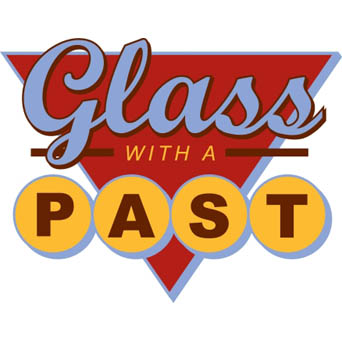
This tutorial is geared toward more experienced glass workers with access to a saw and polishing equipment. For a basic/beginner version that doesn’t require tools, visit here: Wine Bottle Drinking Glasses Basic
1. The quality of the glass is critical. Thick bottles work better. The thin, light weight wine bottles are really not going to hold up to this process. I can ask you to just believe me, but I’ll show you what happens a bit later in the process.
2. The quality of the saw is critical. Really. It is. The final quality of your drinking glass and the rim, and the fire polish all depend on the quality of the original cut. My recommendation: a 10″ saw with a high quality glass blade. MK Diamond and Husqvarna both make great blades at just over $100 each. If you can’t afford a saw AND a blade, do what enterprising reader Annie S. did and invest in the saw blade and then rent a saw as needed. With a good saw and a great blade, you can zoom through the bottles, making it a feasible expense.
3. The quality of the polish is critical. Although my fire polish is fine for my purposes, it isn’t as perfectly smooth as some of the import companies.
Enough about that, here we go:
1. Cut your bottle. Here, I’m cutting a green wine bottle at 4.5″ tall on my lovely new saw with a 10″ MK diamond blade. This particular saw is a 2.5hp 10″ Chicago Electric Power Tools Industrial tile and brick saw. You can get an updated version from Harbor Freight (different color).
2. Polish flat for a perfectly flat rim. I used a steel wheel polisher with slurry, but you could just as easily use a lap wheel, or hand lap with slurry, if your cut is smooth, it takes very little time.
3 – Bevel the edge using a mirror bit.
This bit is handy for quickly giving a uniform bevel to the rim of your wine glass. For a truly rounded rim, you’ll probably have to do this part by hand or with a file. I’m fine with a bevel. UPDATED: I did a final light sand with 1200 grit wet/dry sandpaper, took about a minute and got a lovely rounded rim.
4 – Fire Polish
This step will require some testing. I started with cut bottles in five colors at the same temperature to test and see if different colors melted differently. Once I nailed down a firing schedule, I fired many bottles at once:

And now for the magic:
Fire Polish Firing Schedule for Wine Bottle Drinking Glasses
| Ramp Temp | To | Hold For |
| 240/hr | 500 | 10 min |
| 240/hr | 1275 | 5 min |
| 0/hr (as fast as possible) | 1060 | 20 min |
| 150/hr | 850 | 0 |
| 300/hr | 650 | off |
TEST YOUR KILN!! I can’t emphasize this enough. All kilns vary. Start with my schedule, if your test glasses warp out of shape, go down 20 degrees and try again. If your test glasses don’t fire polish, go up 20 degrees and try again. Firing a full batch of bottles with an untested firing schedule is madness. Don’t do it! (and if you do, do not write to me and complain about it)
More helpful tips:
- Short glasses work better than tall glasses. Bottle glass thins as it goes up to the shoulder of the bottle. All of the tall glasses that I made showed some sign of distortion.


- Thick glass works better than thin glass. In the same firing, a tall thin walled green bottle began to collapse, while the shorter thicker green glasses fire polished with no distortion at all. If you insist on tall glasses, try a slightly lower top temperature, particularly in top element kilns.
- All of the steps shown take only a few minutes per glass. The more time and effort you put into your polishing, the better your final product.


